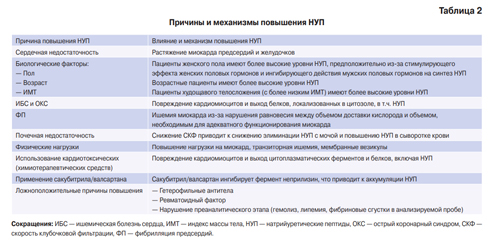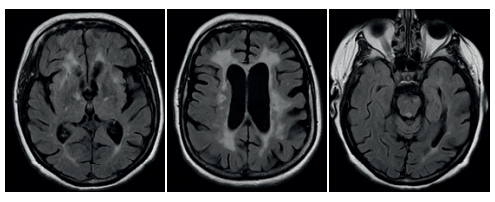Cardiovascular effects of non-invasive ventilation in the treatment of breathing-related sleep disorders in bariatric patients
Cardiovascular and metabolic complications in morbid obesity
Morbid obesity (MO) is a condition in which body mass index (BMI) is >40 kg/m or >35 kg/m in the presence of serious complications associated with obesity. Despite the low prevalence of morbidity among the adult population (3-6%), the high medical and social significance of the problem is specified by the comorbidities and the key role of obesity in the development of risk factors for cardiovascular diseases (CVD): hypertension (HTN), dyslipidemia and carbohydrate metabolism disorders [1]. Analysis of 57 prospective studies indicates that an increase in BMI for every 5 kg/m increases all-cause mortality by 30% and cardiovascular mortality by 40%. Depending on the age of obesity development, life expectancy at a BMI of 40-45 kg/m decreases by 8-10 years, which is comparable to smoking [2].
Bariatric surgery is the most effective treatment for MO. One of the most common complications of obesity is obstructive sleep apnea syndrome (OSAS) characterized by episodes of partial or complete obstruction of the upper airway during sleep. Obesity increases the thickness of the tongue and neck tissues, which reduces the breathing space. The consequences of regular OSAS are the development of hypoxia, hypoxemia, hypercapnia, accompanied by frequent nocturnal awakenings, leading to a decrease in sleep quality and daytime functional impairment. The severity of OSAS is assessed by the number of episodes of complete and partial respiratory arrests per hour — the apnea-hypopnea index (AHi). The severity of OSAS directly correlates with BMI — an increase/decrease in BMI by 1% increases/decreases AHI by 3% [3]. The most important predictor of OSAS severity during weight loss is a decrease in tongue thickness [4].
OSAS is observed in 35-93,6% of patients with MO [5]. The prevalence of OSAS estimated among persons 30-69 years old in Russia is 51% and 26% for moderate and severe OSAS, respectively [6]. Evaluation of sleep-disordered breathing (SDB) in all patients scheduled for bariatric surgery showed that 90% of patients were not aware of the SDB presence [7]. This is due to the fact that patients signify the OSas symptoms (drowsiness, fatigue, nocturia) as obesity and comorbidities (for example, diabetes), and most physicians are not very familiar with the diagnosis and treatment of SDB.
The 2011 National Clinical Guidelines for the Management of MO in Adults [8] indicate that all patients with MO should be tested for OSAS. Active diagnosis and treatment of OSAS in obesity is necessary due to a worsening prognosis, an increased risk of cardiac, metabolic, and postoperative complications compared to obesity without OSAS. Prospective observation of patients with HTN, obesity, and OSAS showed an increase in the risk of cardiovascular events by 8,5 times and the hospitalization rate by 2,7 times [9].
Role of bariatric surgery
Bariatric surgery has recently become recognized as one of the most effective methods of combating obesity. In a short period, it has become one of the leading areas of modern surgery. This is due to the progressively increasing number of patients suffering from MO and the lack of effective drugs for its conservative management.
Treatment with bariatric surgery achieves a stable result (~55-65% of overweight loss). Patients after bariatric surgery were followed up for more than 10 years, and the results were significantly better compared to conservative therapy. In addition, today the tasks of bariatric surgery are specified not only by the treatment of obesity but also by correcting concomitant metabolic disorders, especially type 2 diabetes [10][11][12].
The criteria for selecting patients for bariatric surgery in most guidelines are ineffectiveness of previous body weight correction using lifestyle changes and drug therapy, as well as BMI >40 kg/m2 or BMI >35 kg/m with concomitant metabolic disorders (type 2 diabetes, HTN, dyslipidemia, etc.) [8].
With technological progress, the new anesthesia medications, and improved protocols for the management of obese patients, bariatric surgery has become much safer. The death risk today is no more than 0,4%, which is comparable to the usual general surgical operations (cholecystectomy, anterior abdominal wall hernia surgery, etc.) [13].
Influence of SDB on the perioperative period and outcomes in bariatric surgery
In 2016, the large-scale systematic review was published aimed at assessing the impact of OSAS on the development of adverse perioperative outcomes in various surgical interventions and procedures with anesthesia. It should be noted that this review was performed for the Society of Anesthesia and Sleep Medicine (SASM) during the development of the Guidelines for the Preoperative Evaluation of Patients with SDB. The analysis included randomized controlled trials, prospective or retrospective observational studies of adult patients (>18 years), published in English. All included studies diagnosed OSAS based on polysomnography, questionnaires, clinical assessment, medical history, or ICD-9 coding in patients who underwent surgery or procedures with anesthesia and had 1 or more postoperative outcomes. The sample consisted of 413,304 patients with OSAS; the control group — 8,556,279 individuals. Endpoints were pulmonary complications, desaturation, endotracheal tube obstruction, mortality, and need for additional medical care (length of stay in hospital and intensive care unit). Outcomes defined as combined and cardiovascular outcomes associated with SDB were evaluated separately. The authors analyzed 50 studies on surgical interventions. In most of the studies, there was an association of OSAS and worse outcomes compared to the control group. However, the relationship between OSAS and postoperative mortality was controversial. In 9 studies, there was no association; in 3 — there was lower mortality in the SDB group, and in 1 study an increase in mortality was recorded [14].
We analyzed studies, which included patients undergoing bariatric surgery. There were 11 such works; in 7 of them, OSAS was verified by polysomnography. Out of 2 studies evaluating the effect of OSAS on intubation, only one demonstrated a significant association of severe OSAS with difficult intubation (odds ratio (OR), 4,46; 95% confidence interval (Cl), 1,6-12,3, p=0,004). Two studies did not reveal the increase in the prevalence of pulmonary complications in patients with OSAS compared with the control group. According to the study by Mokhleshi B, et al. based on the large Nationwide Inpatient Sample (USA) database, which includes 91,028 adults who underwent bariatric surgery from 2004 to 2008, patients with SDB were significantly more likely to require emergency endotracheal intubation and mechanical ventilation (5,6% vs 1,2%, p<0,01), and non-invasive ventilation (NIV) (4,8% vs 0,3%, p<0,01). With SDB, respiratory failure (1,8% vs 1,5% in the control group, p<0,01) and atrial fibrillation (1,8% vs 1,2%, p<0,01) were also more often recorded. At the same time, SDB was independently associated with a decrease in hospital mortality (OR, 0,34, 95% CI, 0,23-0,50, p<0,001), total expenses (-869 USD, p<0,001) and length of stay (-0,25 days, p<0,001). Thus, the data are contradictory, which may be due to the limitations of the analysis: inability to confirm the diagnosis and severity of SDB and lack of data on CPAP therapy at home or during the postoperative period [15]. In 2 small studies evaluating the saturation and the desaturation rates, there were no significant differences in the OSAS group compared with controls [16][17]. Also, there was no association of OSAS with an increase in composite outcomes [18][19].
The prognostic role of various factors in the development of perioperative complications in bariatric surgery was analyzed in the large-scale retrospective study [20]. For the analysis, the database of the 2015 Metabolic and Bariatric Surgery Accreditation and Quality Improvement Program (MBSAQIP) was used, which includes >150 thousand bariatric surgeries performed in the USA and Canada. The sample consisted of 101,599 people. Authors registered 6,346 serious adverse events (6,2%) and 4,309 rehospitalizations (4,2%).
Significant predictors of serious adverse events were preoperative BMI, gastric bypass surgery, CVD, smoking, diabetes, HTN, sleep apnea (OR, 1,12; P=0,001), and a history of pulmonary embolism. Significant predictors of rehospitalizations were gastric bypass surgery, female sex, diabetes, HTN, preoperative BMI, sleep apnea (OR 1,11, P=0,002), history of pulmonary embolism, CVD, smoking. It is noteworthy that the OSAS was an independent predictor of both serious perioperative events and rehospitalizations, along with such typical risk factors as CVD and diabetes.
According to another retrospective study with 830 patients after laparoscopic gastric banding, the incidence of cardiovascular events after surgery was significantly higher in patients with OSAS than in those without SDB (35,6% vs 6,9%; p<0,001) after 3 years (mean follow-up period, 6,0+3,2 years), despite achieving a similar decrease in body weight and BMI. The increase in the incidence of cardiovascular events was mainly due to acute cerebrovascular accident, heart failure and venous thromboembolism. After adjusting for baseline differences in CVD risk factors, OSAS remained an independent predictor of cardiovascular events, with a 6,9-fold increased risk of unfavorable cardiovascular outcomes [21].
In patients with MO, cardiovascular risks are largely due to the presence and progression of endothelial dysfunction. OSAS is associated with several pathophysiological mechanisms caused by hypoxia [22, 23] and sleep fragmentation, which induce sympathetic activation, inflammation, hypercoagulation, and endothelial dysfunction. Thus, OSAS aggravates endothelial dysfunction in patients with MO. A number of studies have established that bariatric surgery in patients with MO improves number of pathophysiological processes and comorbidities, including endothelial dysfunction and OSAS. In the study by de Assun^ao Machado AC, et al., the endothelial function in the perioperative period of Roux- en-Y gastric bypass was assessed; 56 patients were included in the case-control study, who, depending on the presence of OSAS, were divided into 2 groups based on the polysomnography data. Endothelial function was assessed according to vascular response to reactive hyperemia and nitroglycerin before surgery and 6 months after Roux-en-Y gastric bypass [24]. According to questionnaire after 6-month follow-up, there was a significant clinical improvement in OSAS symptoms. The Berlin Questionnaire was negative in 100% of the subjects (p<0,001); the Epworth Sleepiness Score decreased 15 times (p<0,001). Analysis in the pre- and postoperative periods showed that endothelium-dependent dilation increased in both groups, however, in patients with OSAS, the improvement in endothelial function was less by 2,5% (p<0,001) than in patients without SDB. According to current data, OSAS is associated with long-term effect to the vascular wall of such unfavorable factors as sympathetic activation, oxidative stress, inflammation, and proatherogenic plasma components [25][26], which can potentially change the endothelial function in patients after bariatric surgery. However, in this study, markers of these pathogenetic processes and the polysomnography after 6 months were not assessed, which is a limitation.
Preoperative examination of patients with OSAS scheduled for bariatric surgery
The problem of OSAS diagnosis in the preoperative period is multidisciplinary and widely discussed. This is relevant due to the fact that presence of OSAS effects the choice of anesthetic approach, prevention measures for perioperative cardiac and respiratory complications, postoperative outcomes and quality of life. Despite active research in this area in the last two decades, there are still many gaps and low evidence level of some recommendations due to retrospective approach, small samples and different designs of the studies conducted. That is why in 2016 the first international consensus meeting of experts was conducted in Amsterdam and recommendations for the perioperative treatment of OSAS in bariatric surgery were published [5].
The importance of OSAS screening in the preoperative period was one of the key issues discussed. The experts noted that adequate detection and treatment of OSAS is important for the following main reasons: reduction of clinical symptoms (drowsiness and cognitive dysfunction), as well as preventable perioperative risks of bariatric surgery; decrease of long-term cardiovascular and cerebrovascular risks; decrease of road traffic accidents, accidents at home or in the workplace.
Polysomnography is the gold standard of OSAS. In perioperative assessment, along with AHI, it is recommended to use the oxygen desaturation index for risk stratification as well. However, despite high diagnostic value, polysomnography is not required for the preoperative examination of all patients with MO, which is due to limits of sleep research laboratories, increased costs and low evidence of the significance of OSAS diagnosis before the intervention. In turn, using type III portable sleep monitors for screening is proposed. Among the questionnaires, using the STOP-Bang and Berlin questionnaires (sensitivity, 86%; specificity, 77%) is recommended. At the same time, it was noted that the Epworth Sleepiness Scale should not be used, since the severity of symptoms has a poor correlation with the sleep apnea detection in such patients. More recent works, on the contrary, indicate a low sensitivity of the STOP-Bang and Berlin questionnaires and a direct correlation between the sleepiness level and the OSAS severity according to the Epworth Sleepiness Scale [27].
In case of positive screening tests results, the 2019 AACE/TOS/ASMBS/OMA/ASA guidelines recommend polysomnography for OSAS verification before bariatric surgery [28].
For perioperative risk stratification, the identification of obesity-hypoventilation syndrome (OHS) is important. The prevalence of OHS among obese patients reaches 20%, while in persons with OSAS, this condition is often not defined [29]. In turn, the combination of OHS and OSAS is associated with higher morbidity and mortality after bariatric surgery [30]. Experts recommend determining venous bicarbonate concentration as part of routine screening to detect OHS. The threshold level for OHS diagnosis is HCO3–>27 mmol/L with a sensitivity of 86% and a specificity of 90% [5]. In turn, the 2019 guidelines recommended the arterial blood gas test in patients with SDB and lung diseases, if this can change management strategy [28].
In the study by De Raaff CAL, et al., an algorithm for perioperative patient management was proposed (Figure 1) [31]. Indeed, OSAS and OHS screening in patients with MO is one of the significant components that determines the perioperative strategy in bariatric surgery.

Figure 1. Perioperative management of the bariatric patient with and without obstructive sleep apnea (according to de Raaff CAL, et al.).
Abbreviations: BPAP — bilevel positive airway pressure, CPAP — continuous positive airway pressure, OHS — obesity hypoventilation syndrome, OSA — obstructive sleep apnea, PEEP — positive end- expiratory pressure.
Latest American Academy of Sleep Medicine guidelines for NIV recommend Constant Positive Airway Pressure (CPAP) therapy for patients with OSAS and excessive daytime sleepiness, impaired quality of life, and hypertension [32]. Given the MO comorbidity, these symptoms occur in almost all patients with MO. For patients with comorbidities, the selection of NIV should be performed in the laboratory using polysomnography. At the beginning of therapy, it is necessary to educate the patient in the NIV and behavioral therapy use [32]. CPAP therapy is recommended in cases of chronic obstructive pulmonary disease or one of the following criteria: hypercapnia (PaCO >45 mm Hg during wakefulness) and/or SpO2 <88 % during >5 min of sleep time. If hypoxemia maintains, oxygen therapy is added to the treatment.
NIV in bariatric patients
Recent systematic review indicated that CPAP therapy in the early postoperative period reduces the risk of respiratory complications, the incidence of postoperative high blood pressure, desaturations, and prolonged length-of-stay [33]. There is currently no data on how long preoperative CPAP therapy is required to improve outcome. However, CPAP therapy should be started as soon as SDB is identified. In the postoperative period, CPAP therapy is resumed immediately after extubation. This does not increase the risk of anastomotic or suture changes. Patients with SDB after bariatric surgery require continuous pulse oximetry monitoring in the early postoperative period with low levels of sedation and opioid use. Since CPAP therapy reduces the risk of cardiopulmonary complications after laparoscopic bariatric surgery, routine hospitalization in the intensive care unit in the immediate postoperative period is not required [28]. Bariatric patients require more active follow-up than regular patients with SDB. In the postoperative period, more intensive follow-up is required with correction of therapy with weight loss. With a 10% weight loss, a reassessment of OSAS severity is required [8].
CPAP therapy in patients with MO undergoing bariatric intervention
Population and cohort studies with OSAS patients revealed that CPAP therapy in patients with MO improves cardiometabolic profile. There is also evidence that OSAS patients who underwent other operations (joint replacement, etc.) and who used CPAP therapy have a lower incidence of postoperative complications compared to patients without CPAP [34]. With the perioperative CPAP-therapy, there is an improvement in exercise tolerance and less severity of hypoxemia (after surgery) in patients with OSAS [35][36][37][38].
However, less is known about the impact of CPAP therapy in the subgroup of patients with MO who are scheduled for or already underwent bariatric surgery. Most of the studies assessed the frequency of continuation/withdrawal from CPAP therapy and its effect directly on perioperative outcomes, including mortality rates, length of stay in the hospital and intensive care unit, and the incidence of postoperative complications. Most of these studies are retrospective and include small subgroups of patients using CPAP therapy, and in prospective studies more often randomization was not used to select groups, which limits the significance of the results [39].
The available data on early postoperative complications suggest a protective effect of CPAP therapy in relation to pulmonary complications, while this effect has not been observed in relation to other organs and systems [25][36][37].
In terms of length of stay, the results are mixed. The study with 410 OSAS patients, of which 53 subjects underwent bariatric surgery, the length of stay did not differ between patients who received CPAP therapy in the preoperative period and those without it [40]. According to these data, the authors themselves suggested the effectiveness of CPAP therapy for the prevention of pulmonary complications. These data are comparable to those of Kong WT, et al. (2016) [40]. At the same time, Meng L (2010) showed that in patients who used CPAP therapy before and after bariatric surgery, the length of stay in intensive care unit was significantly shorter (159+78 vs 211+82 min, p=0,029). They also required reintubation and transfer to the intensive care unit less frequently, although these differences did not reach statistical significance [36]. However, it should be noted that these analyzes are of a retrospective design, which could have influenced the results. In the prospective study by Proczko M, et al. (2014), patients using CPAP therapy had a lower length of stay and reintubation rate. However, in this study, the OSAS was diagnosed according to the STOP-Bang questionnaire, and not all patients in the comparison groups (without CPAP) underwent polysomnography or cardiopulmonary monitoring [37], which may cause an underestimation of SDB [5][28].
In terms of side effects such as nausea and vomiting, CPAP therapy was safe in the early postoperative period [36].
With regard to cardiometabolic effects, the antihypertensive effect of CPAP therapy has been the most studied. Despite the fact that the mean BP decrease is small (-2 to -3 mm Hg), it is significant, more pronounced in relation to diastolic and nocturnal BP and improves BP control in patients with resistant hypertension [41][42]. Moreover, it has been proven that CPAP therapy helps prevent the new cases of hypertension [43], which should also be taken into account in normotensive patients with MO. In general, data on antihypertensive action can be extrapolated to patients with MO. This is confirmed by the prospective study and retrospective analysis of case histories [36] of patients who underwent bariatric surgery, indicating a lower rate of BP increase and the need for intravenous antihypertensive medications in the postoperative period in CPAP patients.
The antiarrhythmic effect of CPAP therapy has also been proven, in particular, on sleep-related bradyarrhythmias and paroxysmal atrial fibrillation, including after radiofrequency ablation [44][45].
Potential metabolic effects are equally important. The data on the effect of CPAP on body weight are contradictory and, rather, indicate no direct effect both in general among patients with OSAS and in the subgroup of patients scheduled for bariatric surgery. Changes in body weight after bariatric surgery are more associated with the operation itself and its type than with the CPAP therapy performed [40][46]. According to the long-term (mean follow-up, 7,2+2,3 years) prospective observational study by Although Collen J, et al. (2015) with a small sample of patients after bariatric surgery (CPAP, n=5; no- CPAP, n=16), no-CPAP patients with OSAS has a higher weight gain in the long-term postoperative period [47].
The theoretical prerequisites for improving glyce- mic control and reducing the severity of insulin resistance during CPAP therapy have been confirmed only in a number of studies [48]. However, the mixed results of most cohort and randomized controlled trials currently did not determine the effectiveness of CPAP therapy in lowering glucose levels [49][50][51][52]. Similarly, the data on reducing the risk of new diabetes cases in patients with OSAS using CPAP therapy are contradictory [53].
It has been shown that in persons with severe OSAS and low adherence to CPAP therapy, the risk of death is 5 times higher than in those who regularly use CPAP devices [54]. A retrospective assessment of the long-term prognosis of 830 patients after bariatric surgery also did not reveal significant differences between patients who used (n=68) and those who did not use CPAP therapy. Although the authors noted a trend towards a slightly more favorable prognosis among patients who received CPAP- therapy (log-rank p=0,051). Possibly, insignificance is due to an overall low incidence of cardiovascular events (8 in CPAP group and 0 in no-CPAP group) and a relatively short follow-up period (30 months). Recalculation of survival rates in groups revealed the higher significance of differences (log-rank p=0,047) [21]. The prospective observational study by Proczko M, et al. (2014) also did not reveal differences in mortality after bariatric surgery between the CPAP and no-CPAP groups; however, the total number of deaths was small (2 cases out of 693 patients) [37].
The beneficial effects of CPAP therapy are observed not only in patients with OSAS, but also in those with OHS. Randomized trials suggest that CPAP therapy improves the results of blood gas test, reduce the severity of hypercapnia and hypoxemia, as well as the risk of acute respiratory failure [15][55]. However, it should be noted that in a number of studies the sample was small and the criteria for selection and assessment of outcomes were not always comparable.
Inconsistency of results is associated with low patient adherence to therapy, heterogeneity and differences in the studied cohorts, high baseline severity of cardiometabolic disorders, errors in study design, and other factors.
All of the above is the rationale for CPAP therapy both in the preoperative and earliest postoperative period. Moreover, US guidelines do not recommend the management of OSAS patients in the intensive care unit if CPAP therapy can be used in the primary unit [28]. It is emphasized that the early use of CPAP therapy is not associated with an increased risk of disruption of sutures and anastomoses.
Future studies need to explore the following issues: differences in the cardiometabolic effects of CPAP therapy in patients with MO and asymptomatic OSAS, mild OSAS, mixed and central SDB, which are often recorded in patients with high BMI; risks associated with residual AHI and persistent desaturation (even with normal AHI) during CPAP therapy.
Conclusion
The growing prevalence of obesity and related diseases and complications requires the development of new approaches to treatment and improvement of existing strategies. Since the early 2000s, there has been intensive technological progress in bariatric surgery, which significantly reduces the risk of perioperative complications and increases the success rate of surgeries. However, obese patients with comorbid conditions, and in particular SDB patients (OSAS and OHS), are at very high risk of cardiovascular and pulmonary complications and require the close attention of a multidisciplinary team. NIV has been shown to be effective and protective for a range of cardiovascular and pulmonary outcomes in the general group of SDB patients. However, the available information on OSAS patients scheduled for bariatric surgery cannot be considered sufficient, since they are limited to data mainly from small retrospective studies. To date, some questions are still unanswered, which requires further larger prospective randomized trials.
Чтобы читать статью войдите с логином и паролем от scardio.ru
Keywords
For citation
Bochkarev M.V., Medvedeva E.A., Shumeiko A.A., Korostovtseva L.S., Neimark A.E., Sviryaev Yu.V. Cardiovascular effects of non-invasive ventilation in the treatment of breathing-related sleep disorders in bariatric patients. Russian Journal of Cardiology. Education. 2020;25(9):4025. (In Russ.) doi:10.15829/1560-4071-2020-4025
Copy








